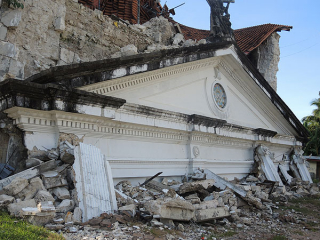Tenth International Training Course (ITC) on Disaster Risk Management of Cultural Heritage
12 – 28 September 2015, Kyoto, Kobe and Tohoku area, Japan
Application deadline: 22 April 2015
Organized by the Institute of Disaster Mitigation for Urban Cultural Heritage, Ritsumeikan University, in cooperation with UNESCO World Heritage Centre, ICOMOS/ICORP and ICCROM.
Supported by Toyota Foundation “Initiative Program”
Theme of ITC 2015
Protecting cultural heritage from disaster risks due to earthquakes and floods.
Earthquakes and floods cause immense damage to cultural heritage. The northern Italy earthquake of 2012 caused widespread damage to the historic city of Ferrara while earthquake in Philippines in 2013 damaged historic Bohol churches. Floods in the Balkan region in 2014 affected numerous historic towns, 2011 floods in Thailand severely damaged the World Heritage Site of Ayuthhaya, and 2010 floods in Pakistan affected many archaeological sites and vernacular settlements along the Indus River.
The world is facing an increased rate of urbanization, more than ever before. The number of people living in cities equaled those in villages in 2007 and has risen ever since. Such a fast pace of urbanization accompanied by densification, poorly constructed buildings and overburdened infrastructure is putting tremendous pressure on heritage sites, especially those located in urban areas, thereby increasing their vulnerability to earthquakes and floods. Moreover, climate change is contributing towards increased intensity and frequency of hydro-meteorological events such as heavy rainfall and cyclones. As a result, many heritage sites located in global hot spots such as coastal areas especially below sea level are exposed to unprecedented risks of inundation. Also, there is an increased risk of low frequency/high intensity incidents of flooding that may trigger landslides along mountain slopes.
While vulnerability of cultural heritage to earthquakes and floods is increasing more than ever, there are countless examples of traditional knowledge that have evolved within communities through a series of trials and errors, which demonstrate that cultural heritage can be an effective source of resilience. Through this accumulated wisdom, these communities have developed effective indigenous mechanisms of dealing with earthquakes and floods rather than trying to only resist them through technocratic measures. Considering these issues and challenges, the 10th International Training Course will give special focus on protecting cultural heritage from disaster risks due to earthquakes and floods.
Application Requirements
Guidelines for Application
Application form
To apply
Applications should be E-mailed to dmuchitc@st.ritsumei.ac.jp
Please see the Guidelines for Application for more details.
Application deadline: 22 April 2015

